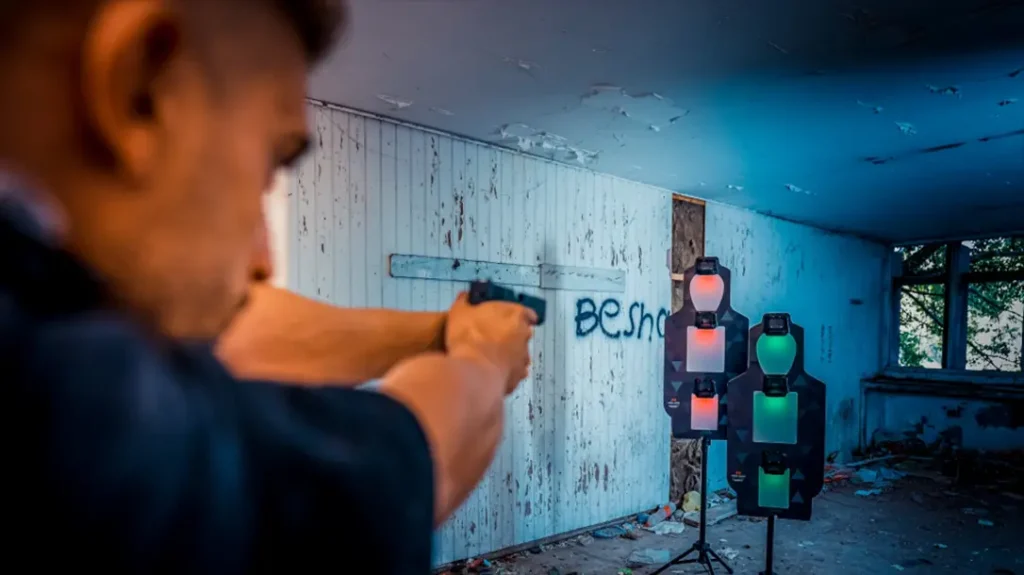Operation Bastogne was a critical support mission that established the ability of special forces to essentially create a forward arming and refueling point (FARP) from nothing, in the middle of enemy territory if necessary, to support the extension of air power deep inside Afghanistan.
- RELATED STORY: Operation Rhino, Gecko: Tackling the Taliban in Afghanistan
On the evening of Nov. 13, 2001, 32 Rangers parachuted from an MC-130 Combat Talon into pitch-black darkness from just 800 feet above the target area, carrying massive amounts of equipment on their backs—a member of the team, writing anonymously for shadowspear.com, describes jumping on a scale in full gear and discovering that his normal weight of 170 was now over 300 pounds. A drop from 800 feet (at the most) into darkness, without any ground markings or distinguishable landmarks, is essentially a blind jump.
The team member described his experience this way: “There was zero illumination outside; the moon was nonexistent. I could barely see my reserve chute, and that was about it. In any static line jump, you followed several steps as soon as you exit the plane. One important step involves checking your canopy to see that it deployed and was not full of holes. There was no canopy check on this night. I just had to assume it was okay, because I couldn’t see it. I couldn’t see the ground. I couldn’t see a horizon. I couldn’t see any trees. I couldn’t see… BAM! That noise was the sound of me hitting the frozen solid ground like a sack of rocks.
Advertisement — Continue Reading Below
“We parachuted in at around 500 feet and the air was very cold. Cold air makes the parachute descend faster. Fortunately, I separated my feet for a split second before hitting the ground (this is extreme sarcasm) and at that moment I made contact with the ground. No one saw the ground coming. It was the first jump that knocked the air out of me. Feeling like a fish out of water, I struggled on the ground attempting to get my weapon into action and my night vision over my eyes as quickly as possible. Even with night vision, everything was barely visible. I was now ready to go. Just as I stood up I felt like I was standing barefoot on shards of broken glass. Apparently I busted my heel on that landing and those shards of glass were pieces of my bone.”
According to the Ranger, most of his comrades suffered some sort of injury as a result of the jump, but all carried on to complete the mission, which called for locating the “assembly” area via GPS and placing infrared landing lights down the length of the strip to prepare for the C-130 four-engine turboprops that would later land and rapidly unload two helicopters and a mobile FARP, soon followed by another C-130 with yet another pair of helicopters.
- RELATED STORY: Operation Red Wings: The ‘Lone Survivor’ Story
Within 15 minutes, all four helicopters were en route to their targets. Less than two hours later they were back to rearm and refuel before setting out again toward another target. Some 80 minutes later, the MC-130s, which had executed an aerial refueling rendezvous, reloaded the FARPs and prepared for the final return of the helicopters about an hour later.
Advertisement — Continue Reading Below
Soon, the helicopters, FARPs, and all the personnel, including the 32 Rangers, were on board the MC-130s, leaving the desert just as deserted as they had originally found it.
Just The Facts
Date: November 13, 2001
Advertisement — Continue Reading Below
Location: Southwest of Kandahar, Afghanistan
U.S. Forces: Army Rangers and Air Force special tactics squadron
Enemy/Target: Securing a desert landing strip to facilitate helicopter raids
Advertisement — Continue Reading Below
Equipment: MC-130 Combat Talon planes, C-130 four-engine turboprops
- RELATED STORY: Special Ops: The Ghosts of HALO Parachuting

























